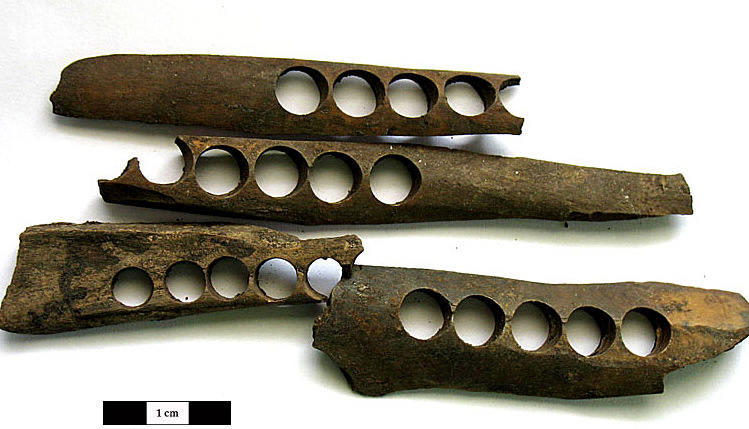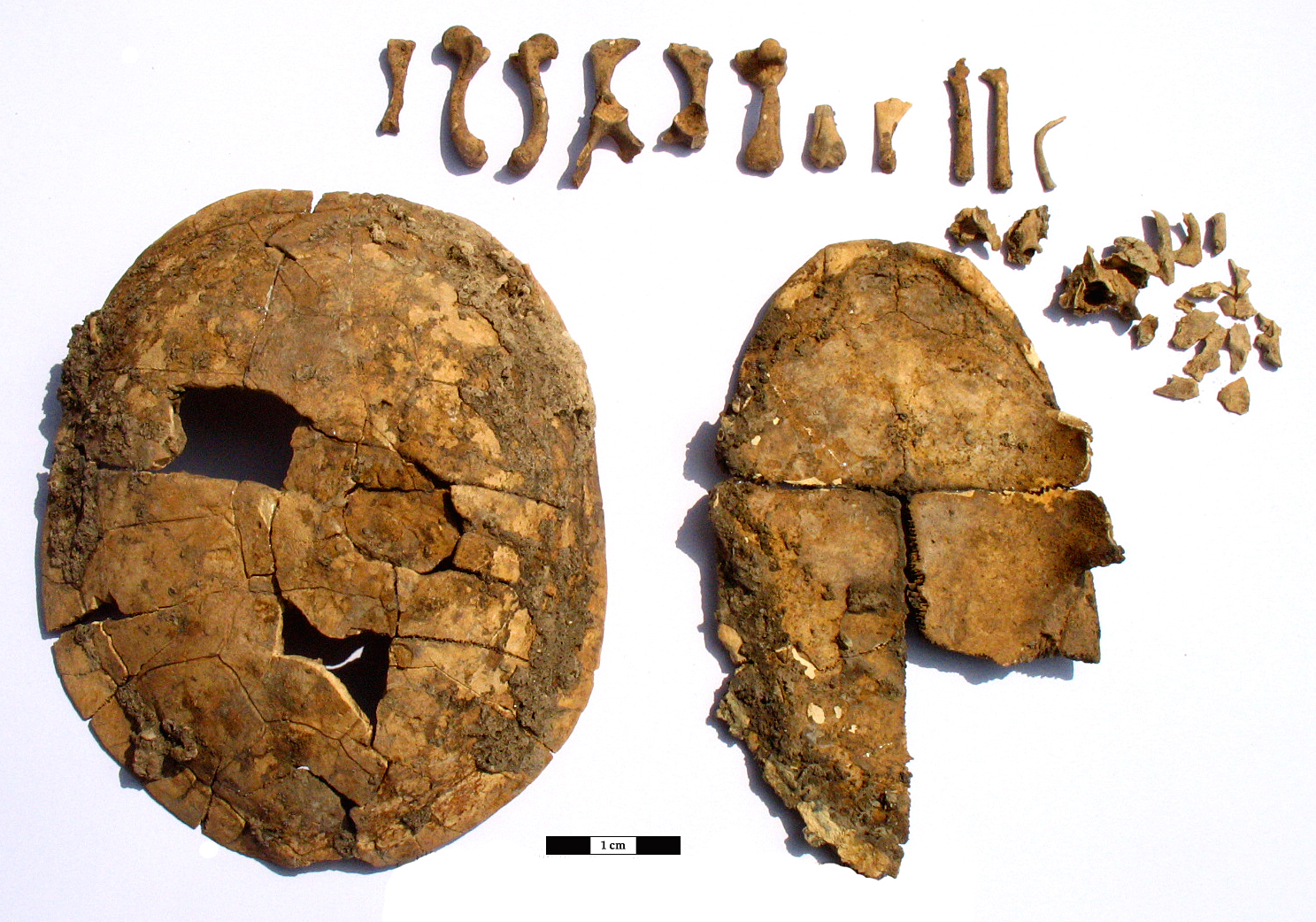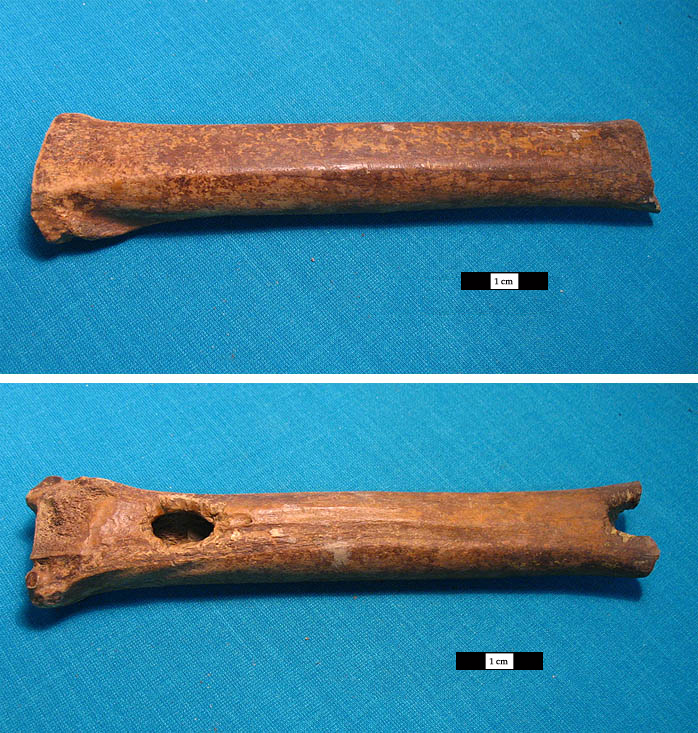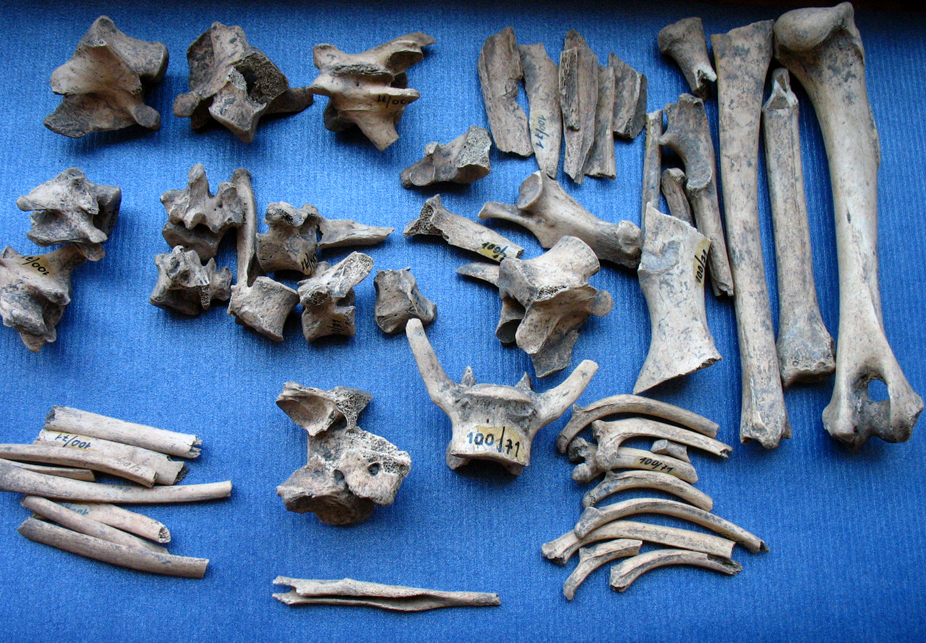
Laboratory of Archaeobotany and Palaeoecology
Archaeozoology
Archaeolozoology is a scientific discipline which refers to the study of animal remains (bones, teeth, horny tissue, conches of molluscs etc.) from archaeological sites. The goal of archaeozoology is to gain and to better understand the relation between humans and animals in the past. Archaeozoology links up the archaeological informations with the results of zoological analysis. This connection can bring valuable conclusions about human nutrition because a meat formed an important component of diet next to the plants. Some animals did not serve only for the consumption purpose, they were unexpendable in the social affiliation and belief systems or they were breeded as pets for an emotional support and used for other products (fur, wool, milk, force etc.). The archaeozoological research is focused both on the macroscopic tissues of vertebrate and invertebrate and on their DNA, the traces elements or the stable isotopes contained in the bones and teeth.

Fragments of diaphyses of long bones of large mammals, which represented a suitable raw material to produce bone buttons. Photo: L. Kovačíková
The archaeozoological research is primarily based on identification, analysis and interpretation. The identification stage can be equated with collecting primary data (taxonomic identification, elements represented, specimen count, modifications and pathologies, anatomical features of age and sex, measurements, taphonomy etc.). The analytical part is deriving from secondary data (body dimensions, slaughtering profiles, sex ratios, relative frequencies of taxa or skeletal frequency etc.). Primary and secondary data form the basis for interpretations, which focus on the human subsistence strategies, domestication of animals, spacial and temporal aspects of the animal resources etc.

Remains of an European pond turtle (Emys orbicularis) from an early medieval site in Mělník, Nůšařská Street. Photo: L. Kovačíková
Study of archaeozoology at the University of South Bohemia:
- Archaeozoology (KZO/163) – Faculty of Science (Department of zoology, master´s degree)
- Archaeozoology for archaeologists (UAR AZA) – Faculty of Philosophy (Institute of archeology, master´s degree)
- Introduction to environmental archaeology II (UAR/RUE2) – Faculty of Philosophy (Institute of archeology, bachelor degree)

The metatarsal bone of an adult horse (Equus caballus), which is shaped like a skate. Found in Prague, V Tůních 6. Photo: L. Kovačiková

An incomplete skeleton of an adult dog (Canis familiaris) discovered during archaeological research in Staré Badry. Photo: L. Kovačíková